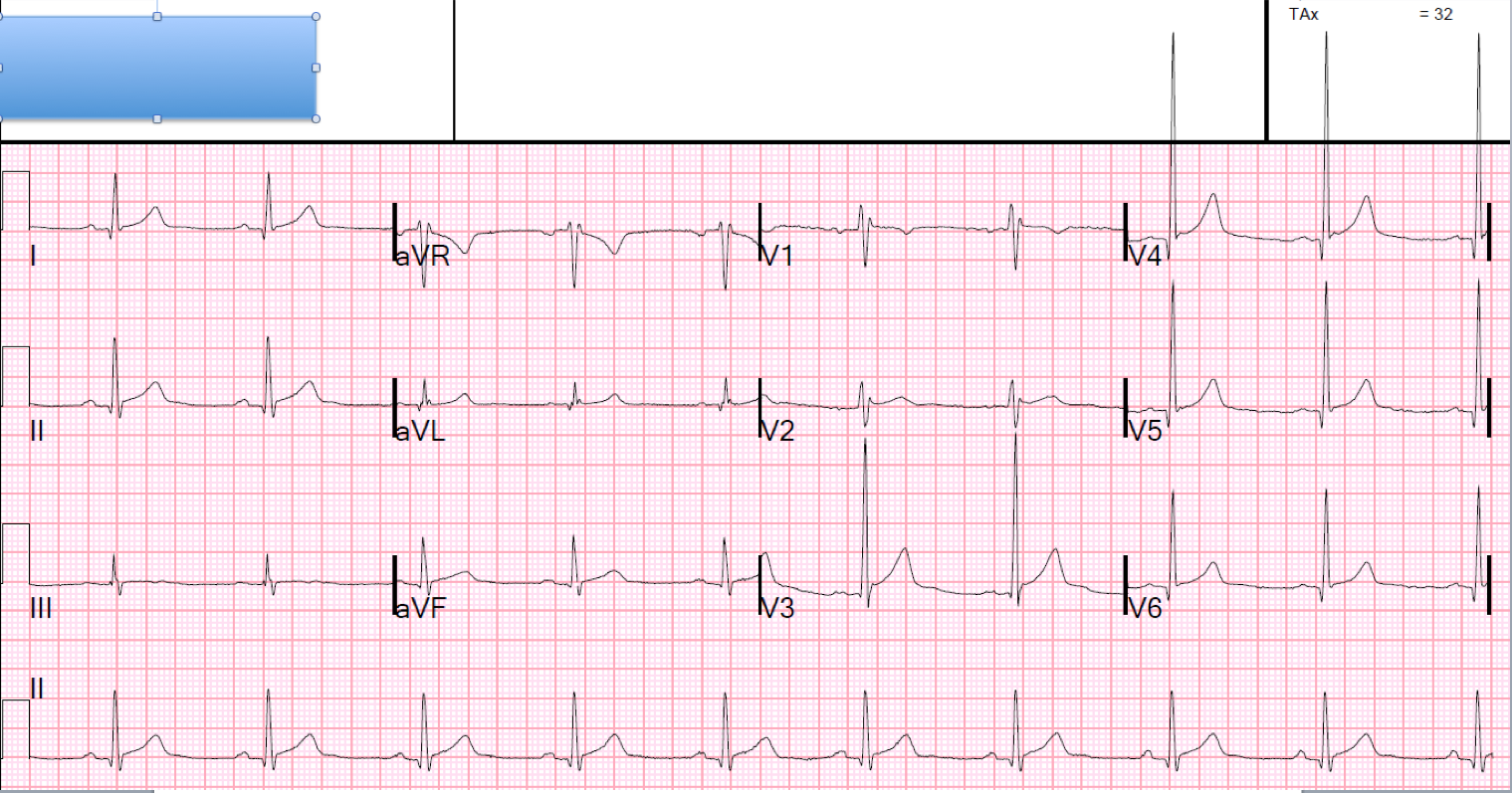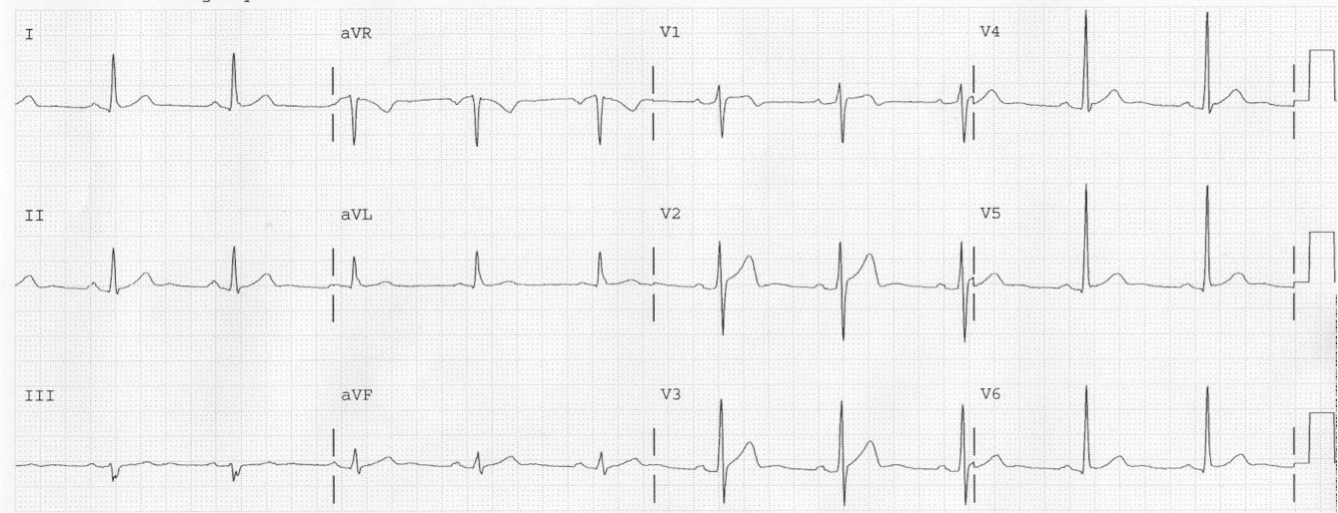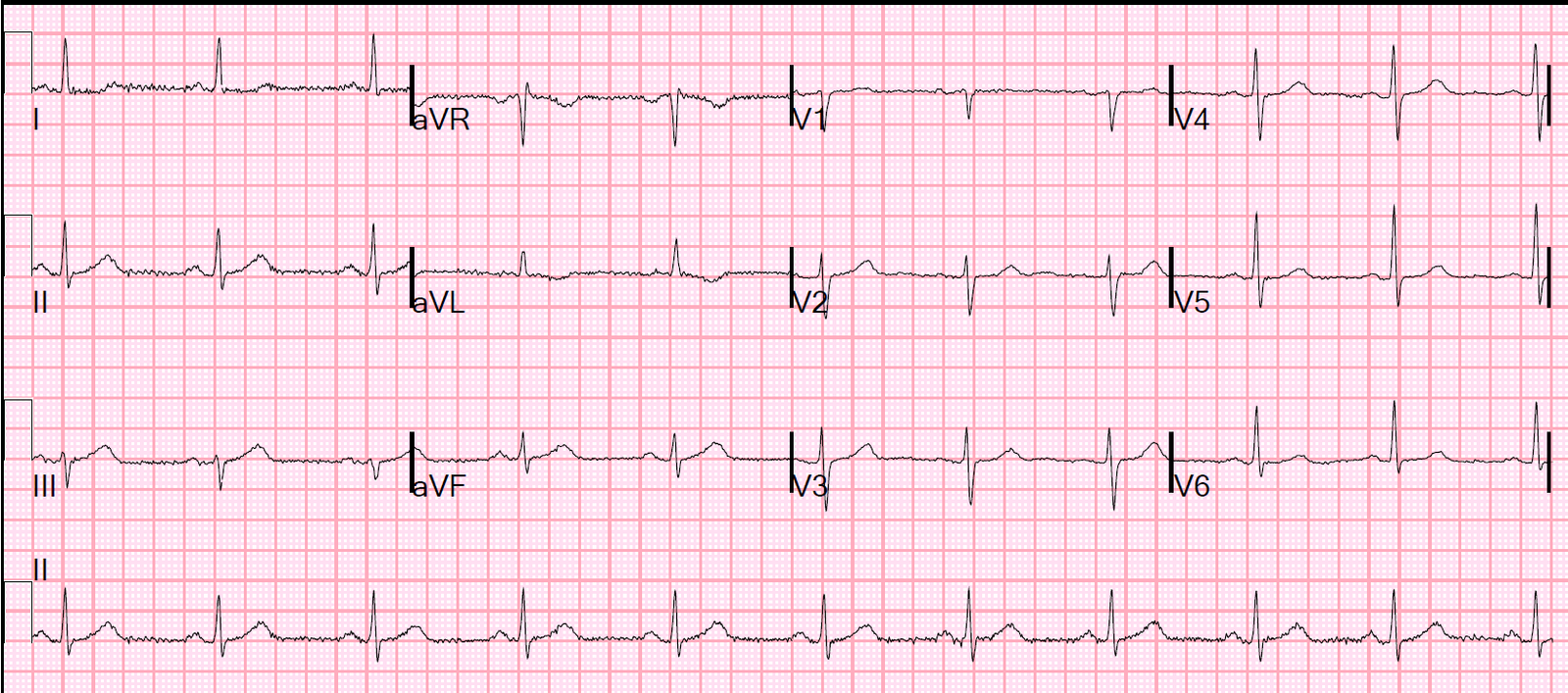This is my most popular lecture, which Scott Joing of www.hqmeded.com just recorded for me in his amazing video recording studio.
When I give this lecture real-time, I usually do it in a workshop and have more time – enough time to stop and let people get a good look at the ECG and try to find the critical elements for themselves before going on to explain them. That makes for a significantly longer lecture.
But if you want to have time to scrutinize any ECG, just pause the video to look at the ECG for a while before you play my explanation.




– the original paper of Spanish cohort study of 272 pts of inferior STEMI, STD in aVL of 46 pts/51 subtle changes?
– amazing lecture! Thank you.
– can you please tell me the paper of Spanish cohort study of inferior STEMI that STD in aVL in some pts'
– great lecture, thank you
Chang
Thanks!
Here is the Marti paper: http://www.sciencedirect.com/science/article/pii/S0002870314005481
For the data I presented, we contacted him and he went through his cases, so you won't find it in the paper.
Steve Smith
What do you mean by U-wave in benign early repolarization ? min 07:45 to 07:50 ? is it related to hypokalemia ?
Mostafa,
No, they do not represent hypoK. Early repol often has normal U-waves in V2 and V3. They seem to me to be useful in identifying it as early repol, though I have not studied it.
Steve
very amazing lecture. thank you
Thanks!
Congratulations on this awesome lecture !
Could you comment on why there is no ST depression in that ECG with inferoposterior MI at 59:00 ?
Thanks again.
Emre,
there is ST depression, just a little. look closely.
Steve
Thank you so much for this lecture and all the others you posted.
You are an incredible teacher! Your lectures are easy to follow and very practical.
My EKG skills have improved light years since I started studying your work.
Can't wait for your next blog post or lecture
Thanks again!!
Alex
Thank you, Alessandro!
Steve Smith
Tank you.
Thank you for the amazing lecture Dr Smith!
In terms of managing these patients with subtle findings (i.e: ones who do not meet criteria for STEMI); what prompts you to activate the cath lab immediately vs medical management (antiplatelet therapy + heparin) with early invasive strategy (PCI the next day for instance).
Talal
Talal,
If I think there is occlusion, the patient goes to the cath lab.
If I am unsure, I evaluate intensively until I've proven there is, or is not, occlusion. Formal echocardiogram, serial ECGs, comparison with old ECGs are all useful.
Never leave an acute coronary occlusion sitting and waiting.
OK?
Steve
Have you considered studying T wave changes at a standardized QRS amplitude, or formalizing ST and T wave changes in terms of their ratio to the QRS?
I have done this in many of my studies already. LBBB, early repol, LV aneursym.
Just search for those topics in my publication list:
https://scholar.google.com/citations?user=ZBKuiKwAAAAJ&hl=en
extraordinary, dr smith. truly extraordinary. thank you.
tom
Thank you, Tom!
Dear Dr. Smith,
Many thanks for your lecture.
Regarding the patient with the first diagonal at 01:00:08h, could you argue that she also has an anterior MI based on the poor R wave progression and subtle ST elevation? I'm unsure but believe that she has a small Q in V3 too?
When working in a hospital without cathlab facilities, would you promote the use of thrombolytics in these cases without STEMI criteria yet positive on either the formula or reciprocal changes?
Kind Regards,
Kris
That's a very good question about anterior MI. Maybe and I don't know the echo results or if that diagonal affected the anterior wall. I agree it looks like it. As for thrombolytics, this case was mine and it was before we used PCI. I gave that patient thromboytics in spite of her cardiologist telling me not to because he was unsure of the meaning of the ECG and there were not "1 leads with ST elevation". To me it was clearly a large MI due to occlusion. She reperfused after thrombolytics. Nevetheless, one must be very careful with lytics. The risk is high and the potential benefit must then also be. The early placebo controllled randomized trials did not show a mortality benefit for inferior MI, for instance. The risk of intracranial bleed is about 1.5%. So even if it is definitely an acute coronary occlusion, you can't be sure that the amount of myocardium you might save with lytics will be worth the potential risk. An echo can help establish how much myocardium is at risk, but it must be done quickly, as the benefit of lytics is highest very early. Sorry for the indirect answer!
Fantastic learning. I have now downloaded the app and have a much better understanding . Steve . H. Admin FB !2 lead ive got the Rhythm .
Astounded
Hey this is somewhat of off topic but I was wanting to know if blogs use WYSIWYG editors or if
you have to manually code with HTML. I'm starting a blog
soon but have no coding skills so I wanted to get guidance from someone with experience.
Any help would be greatly appreciated!
just use google blogger: https://www.blogger.com/about/?r=1-null_user
Dear Dr Smith
I have tried to calculate the formula, but I have trouble drawing the tangent. Can you give some tips on how to do it properly?
i presume you are talking about finding the j-point in V3? You just have to find the point of transition between QRS and ST-T.
Look through these sites for more help: https://www.google.com/search?q=how+to+find+the+J-point+on+an+EKG&oq=how+to+find+the+J-point+on+an+EKG&aqs=chrome..69i57j33.6588j0j7&sourceid=chrome&ie=UTF-8
Thank you very much, was informative, concise. I had trouble understanding ECG until I incidentally found this . Am gonna watch all of the series. Just started with this one . Thank again 🌷🌷
How can I find other videos for f you have ones? Thanks
Link is at the top: http://hqmeded-ecg.blogspot.com/p/lectures-podcasts.html
Fantastic. Thanks
thank you!